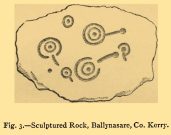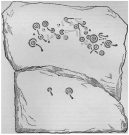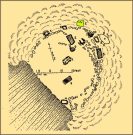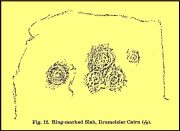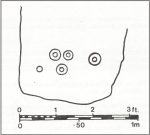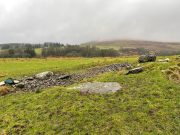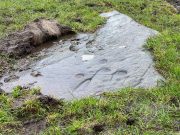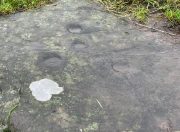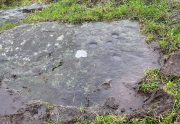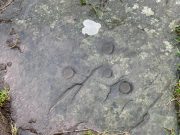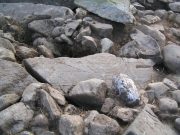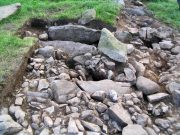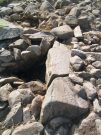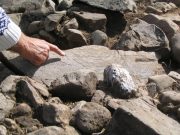Cup-and-Ring Stone (lost): OS Grid Reference – Q 53 03?
Archaeology & History

This is one of three carvings illustrated in James Graves’ (1877) essay on Irish petroglyphs that were first discovered by a Mr Hitchcock in 1848, but which hasn’t been seen since. Graves described the impressive Aghacarrible carving and then told how, “in the neighbouring townland of Gowlane” this and other petroglyphs existed. A series of multiple cup-and-rings and some lines of cup-marks are clearly illustrated on Hitchcock’s fine sketch, but no detailed notes were ever made of the place. It’s presumed that this carving is on an earthfast rock, as the other two others were broken pieces from what he said was a “larger monument.”
There are several Gowlane place-names in the area, but Judith Cuppage (1986) told that the great 19th century artist and antiquarian George du Noyer “identified the townland as Gowlane East”, although the closest “neighbouring townland” would be Gowlin (Gualainn). If any local folk know where this might be hiding, please let us know.
References:
- Cuppage, Judith, Archaeological Survey of the Dingle Peninsula, Oidhreacht Chorca Dhuibhne: Ballyferriter 1986.
- Graves, James, “On Cup and Circle Sculptures as Occurring in Ireland,” in Journal Royal Society Antiquaries, Ireland, volume 4 (4th series), April 1877.
© Paul Bennett, The Northern Antiquarian
The map could not be loaded. Please contact the site owner.
